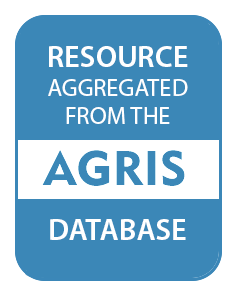What is AGRIS?
AGRIS (International System for Agricultural Science and Technology) is a global public database providing access to bibliographic information on agricultural science and technology. The database is maintained by CIARD, and its content is provided by participating institutions from all around the globe that form the network of AGRIS centers (find out more here). One of the main objectives of AGRIS is to improve the access and exchange of information serving the information-related needs of developed and developing countries on a partnership basis.
AGRIS contains over 8 million bibliographic references on agricultural research and technology & links to related data resources on the Web, like DBPedia, World Bank, Nature, FAO Fisheries and FAO Country profiles.
More specifically
AGRIS is at the same time:
A collaborative network of more than 150 institutions from 65 countries, maintained by FAO of the UN, promoting free access to agricultural information.
A multilingual bibliographic database for agricultural science, fuelled by the AGRIS network, containing records largely enhanced with AGROVOC, FAO’s multilingual thesaurus covering all areas of interest to FAO, including food, nutrition, agriculture, fisheries, forestry, environment etc.
A mash-up Web application that links the AGRIS knowledge to related Web resources using the Linked Open Data methodology to provide as much information as possible about a topic within the agricultural domain.
Opening up & enriching information on agricultural research
AGRIS’ mission is to improve the accessibility of agricultural information available on the Web by:
- Maintaining and enhancing AGRIS, a bibliographic repository for repositories related to agricultural research.
- Promoting the exchange of common standards and methodologies for bibliographic information.
- Enriching the AGRIS knowledge by linking it to other relevant resources on the Web.
AGRIS is also part of the CIARD initiative, in which CGIAR, GFAR and FAO collaborate in order to create a community for efficient knowledge sharing in agricultural research and development.
AGRIS covers the wide range of subjects related to agriculture, including forestry, animal husbandry, aquatic sciences and fisheries, human nutrition, and extension. Its content includes unique grey literature such as unpublished scientific and technical reports, theses, conference papers, government publications, and more. A growing number (around 20%) of bibliographical records have a corresponding full text document on the Web which can easily be retrieved by Google.
Members:
Resources
Displaying 3851 - 3855 of 9579Combining the matter element model with the associated function of probability transformation for multi-source remote sensing data classification in mountainous regions
That the multi-source remote sensing information integrates knowledge-based geospatial constraints to develop efficient and practical Land cover classification algorithm has become one of the most important developing directions in the field of remote sensing ground object classification. Remote sensing classification is a strictly incompatible problem, but the spectra distribution of remote sensing data has compatible attributes especially in mountainous regions, and such contradiction is one of the main reasons leading to uncertainties in remote sensing classification.
Carbon offsets and First Nations in British Columbia
A comparison of pre-Treaty and post-Treaty land title and authority for First Nations pursuing carbon offsets in British Columbia will be filtered through three themes: property rights, shared decision-making and forest governance. The Indian Act (1876) has unclear jurisdiction for pursuing carbon offsets. The Haida Reconciliation Protocol-Kunst’aa guu-Kunst’aayah (2009), Coastal First Nations Reconciliation Protocol (2010) and Nanwakolas First Nations Reconciliation Protocol (2011) address this grey area and achieve protocols that provide certainty for carbon rights.
Does large-sized cities' urbanisation predominantly degrade environmental resources in China? Relationships between urbanisation and resources in the Changjiang Delta Region
Outward expansion of urban lands in the developing nations is often associated with a substantial loss of environmental resources such as forests, wetlands, freshwater and cash crop fields. Yet, determining how different aspects of urbanisation – such as city population size and spread pattern of built-up lands – contribute to the cumulative loss of resources remains controversial. In this study, data sets were constructed describing changes to land cover across 65,200 grid cells at 1 km² spatial resolution for China's Changjiang Delta Region over the past 60 years.
Wind farm land suitability indexing using multi-criteria analysis
Wind farm siting can be considered as Multi Criteria Decision Making (MCDM) problem that consists of set of alternative locations and set of selection criteria. This study applied multi-criteria decision making approach using Analytical Hierarchy Process with Ordered Weigh Averaging AHP-OWA aggregation function to derive wind farm land suitability index and classification under Geographical Information System (GIS) environment. Linguistic quantifier’s version of AHP-OWA aggregation function was used to classify lands based on their suitability for wind farm installation.
assessment of the effectiveness of a random forest classifier for land-cover classification
Land cover monitoring using remotely sensed data requires robust classification methods which allow for the accurate mapping of complex land cover and land use categories. Random forest (RF) is a powerful machine learning classifier that is relatively unknown in land remote sensing and has not been evaluated thoroughly by the remote sensing community compared to more conventional pattern recognition techniques. Key advantages of RF include: their non-parametric nature; high classification accuracy; and capability to determine variable importance.


